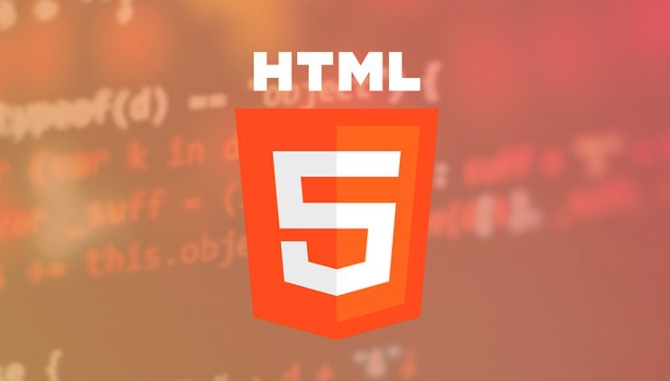Web Workers is a multi-threaded mechanism provided by HTML5 to run scripts in the browser background without blocking the main thread. It allows for tasks such as complex calculations, data processing, etc. while keeping the page responsive. The steps to create and use Web Worker include: 1. Create an external JavaScript file (such as worker.js); 2. Detect browser support on the main page; 3. Instantiate Worker objects; 4. Use postMessage() to send messages; 5. Receive results through onmessage. Its limitations include inability to operate the DOM, limited communication methods, and inconvenient debugging. Applicable scenarios include mathematical calculations, timing tasks, data encryption, image processing, etc. The rational use of Web Workers can significantly improve web page performance.

Web Workers is a multi-threaded mechanism provided by HTML5, allowing you to run scripts in the background of your browser without blocking the main thread. This is very useful for handling complex calculations, data processing, or long-term tasks.

What are Web Workers?
Simply put, Web Workers are JavaScript threads running in the browser background. They run independently of the main page, which means that even if you perform time-consuming operations in Worker, the page can remain responsive without lag.

You can't operate the DOM directly through it, but it's perfect for processing computationally intensive tasks such as image processing, encryption operations, or sorting large amounts of data.
How to create and use a Web Worker?
To use Web Worker, you first need an external JavaScript file that contains the code you want to run in the background. Then instantiate a Worker object in the main page and communicate with it.

The basic steps are as follows:
- Create a worker.js file (for example: worker.js)
- Check whether the browser supports Worker in the main page
- Create a Worker instance and send a message
- Pass data using
postMessage()method - Receive the result by listening to
onmessage
For example, worker.js might look like this:
onmessage = function(e) {
let data = e.data;
// Do some time-consuming operations, such as calculating the Fibonacci sequence postMessage(result);
};Called in the main page:
const myWorker = new Worker('worker.js');
myWorker.onmessage = function(e) {
console.log('Result received:', e.data);
};
myWorker.postMessage('Start Calculation');Web Workers Limitations and Considerations
Although Web Workers are powerful, there are several key limitations to note:
- DOM cannot be accessed : Worker does not have a window object, nor can it operate on page elements.
- Limited communication methods : can only communicate with the main thread through
postMessage()andonmessage. - Compatibility is good, but note : Modern browsers support Web Workers, but may not run on older versions of IE.
- Debugging is more troublesome : Chrome DevTools supports viewing Worker logs, but the debugging experience is not as intuitive as the main thread.
If your project requires frequent updates to the UI or depends on DOM operations, Web Workers are not suitable. But it is a very good choice if you just deal with background logic or data calculations.
Applicable scenarios for Web Workers
Web Workers are best suited for the following situations:
- Perform a large number of mathematical calculations (such as data analysis, machine learning prediction, etc.)
- Long-term polling or timing tasks (such as real-time update of certain states)
- Data compression/decompression, encryption/decryption operations
- Image or video frame processing (in combination with Canvas or WebAssembly)
If you find that your JS scripts often slow down or even get stuck, you can consider putting this part of the logic into the Worker to execute.
Basically that's it. The rational use of Web Workers can effectively improve web page performance, especially when dealing with heavy tasks.
The above is the detailed content of Running background scripts using HTML5 Web Workers.. For more information, please follow other related articles on the PHP Chinese website!

Hot AI Tools

Undress AI Tool
Undress images for free

Undresser.AI Undress
AI-powered app for creating realistic nude photos

AI Clothes Remover
Online AI tool for removing clothes from photos.

Clothoff.io
AI clothes remover

Video Face Swap
Swap faces in any video effortlessly with our completely free AI face swap tool!

Hot Article

Hot Tools

Notepad++7.3.1
Easy-to-use and free code editor

SublimeText3 Chinese version
Chinese version, very easy to use

Zend Studio 13.0.1
Powerful PHP integrated development environment

Dreamweaver CS6
Visual web development tools

SublimeText3 Mac version
God-level code editing software (SublimeText3)

Hot Topics
 What Does H5 Refer To? Exploring the Context
Apr 12, 2025 am 12:03 AM
What Does H5 Refer To? Exploring the Context
Apr 12, 2025 am 12:03 AM
H5referstoHTML5,apivotaltechnologyinwebdevelopment.1)HTML5introducesnewelementsandAPIsforrich,dynamicwebapplications.2)Itsupportsmultimediawithoutplugins,enhancinguserexperienceacrossdevices.3)SemanticelementsimprovecontentstructureandSEO.4)H5'srespo
 Is H5 a Shorthand for HTML5? Exploring the Details
Apr 14, 2025 am 12:05 AM
Is H5 a Shorthand for HTML5? Exploring the Details
Apr 14, 2025 am 12:05 AM
H5 is not just the abbreviation of HTML5, it represents a wider modern web development technology ecosystem: 1. H5 includes HTML5, CSS3, JavaScript and related APIs and technologies; 2. It provides a richer, interactive and smooth user experience, and can run seamlessly on multiple devices; 3. Using the H5 technology stack, you can create responsive web pages and complex interactive functions.
 H5 and HTML5: Commonly Used Terms in Web Development
Apr 13, 2025 am 12:01 AM
H5 and HTML5: Commonly Used Terms in Web Development
Apr 13, 2025 am 12:01 AM
H5 and HTML5 refer to the same thing, namely HTML5. HTML5 is the fifth version of HTML, bringing new features such as semantic tags, multimedia support, canvas and graphics, offline storage and local storage, improving the expressiveness and interactivity of web pages.
 Understanding H5 Code: The Fundamentals of HTML5
Apr 17, 2025 am 12:08 AM
Understanding H5 Code: The Fundamentals of HTML5
Apr 17, 2025 am 12:08 AM
HTML5 is a key technology for building modern web pages, providing many new elements and features. 1. HTML5 introduces semantic elements such as, , etc., which enhances web page structure and SEO. 2. Support multimedia elements and embed media without plug-ins. 3. Forms enhance new input types and verification properties, simplifying the verification process. 4. Offer offline and local storage functions to improve web page performance and user experience.
 HTML5: The Building Blocks of the Modern Web (H5)
Apr 21, 2025 am 12:05 AM
HTML5: The Building Blocks of the Modern Web (H5)
Apr 21, 2025 am 12:05 AM
HTML5 is the latest version of the Hypertext Markup Language, standardized by W3C. HTML5 introduces new semantic tags, multimedia support and form enhancements, improving web structure, user experience and SEO effects. HTML5 introduces new semantic tags, such as, ,, etc., to make the web page structure clearer and the SEO effect better. HTML5 supports multimedia elements and no third-party plug-ins are required, improving user experience and loading speed. HTML5 enhances form functions and introduces new input types such as, etc., which improves user experience and form verification efficiency.
 HTML5 and H5: Understanding the Common Usage
Apr 22, 2025 am 12:01 AM
HTML5 and H5: Understanding the Common Usage
Apr 22, 2025 am 12:01 AM
There is no difference between HTML5 and H5, which is the abbreviation of HTML5. 1.HTML5 is the fifth version of HTML, which enhances the multimedia and interactive functions of web pages. 2.H5 is often used to refer to HTML5-based mobile web pages or applications, and is suitable for various mobile devices.
 HTML5: The Standard and its Impact on Web Development
Apr 27, 2025 am 12:12 AM
HTML5: The Standard and its Impact on Web Development
Apr 27, 2025 am 12:12 AM
The core features of HTML5 include semantic tags, multimedia support, offline storage and local storage, and form enhancement. 1. Semantic tags such as, etc. to improve code readability and SEO effect. 2. Simplify multimedia embedding with labels. 3. Offline storage and local storage such as ApplicationCache and LocalStorage support network-free operation and data storage. 4. Form enhancement introduces new input types and verification properties to simplify processing and verification.
 The Connection Between H5 and HTML5: Similarities and Differences
Apr 24, 2025 am 12:01 AM
The Connection Between H5 and HTML5: Similarities and Differences
Apr 24, 2025 am 12:01 AM
H5 and HTML5 are different concepts: HTML5 is a version of HTML, containing new elements and APIs; H5 is a mobile application development framework based on HTML5. HTML5 parses and renders code through the browser, while H5 applications need to run containers and interact with native code through JavaScript.






